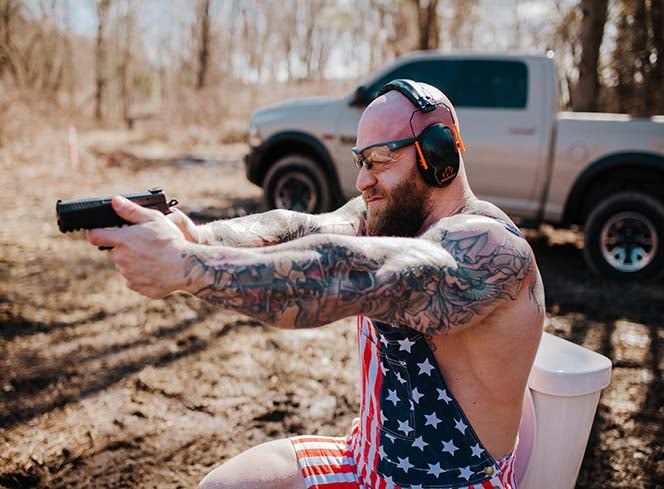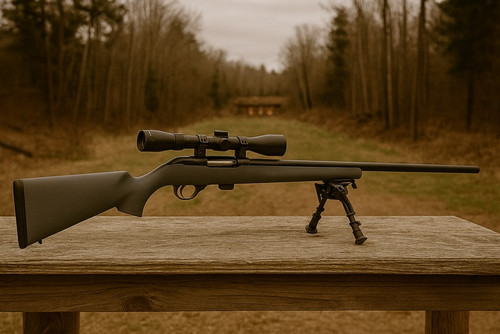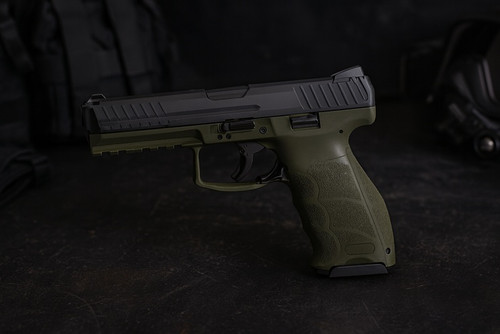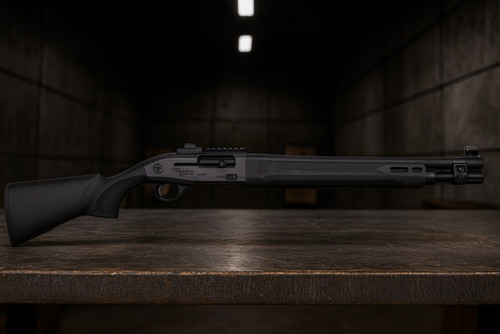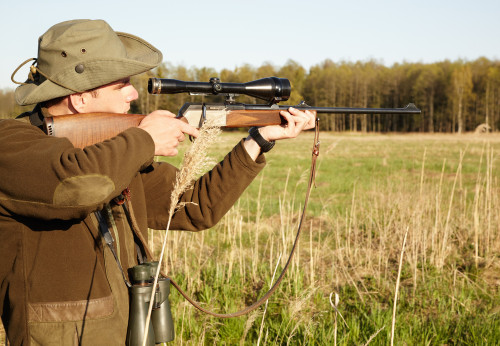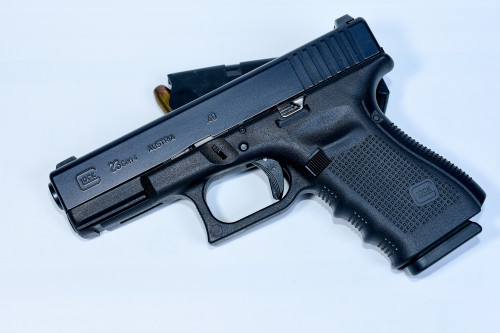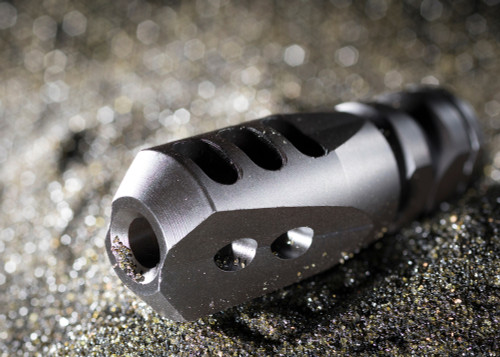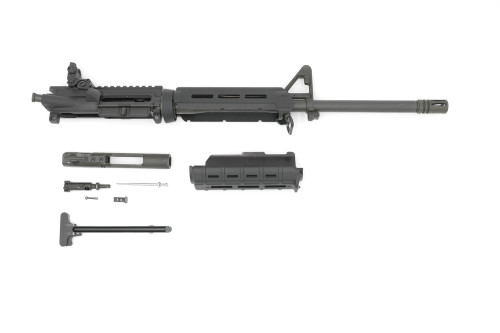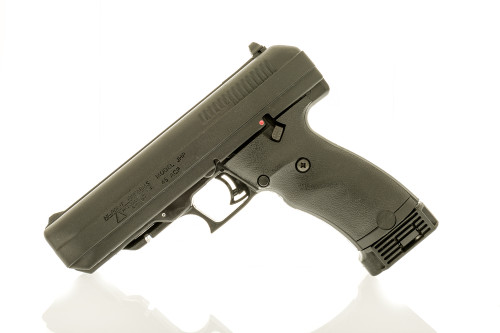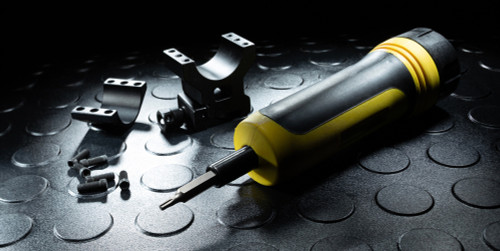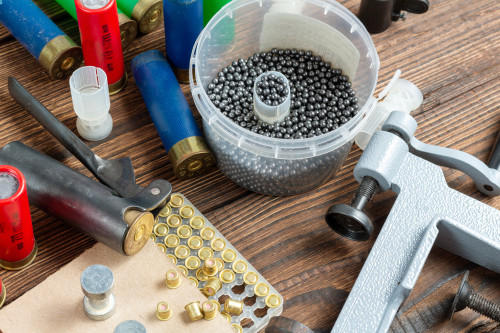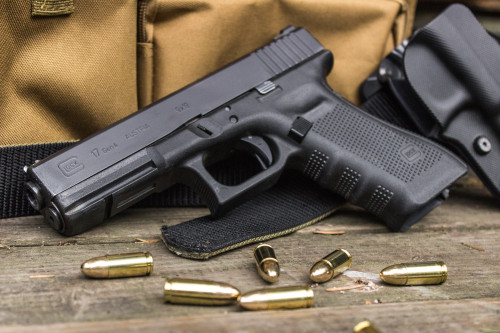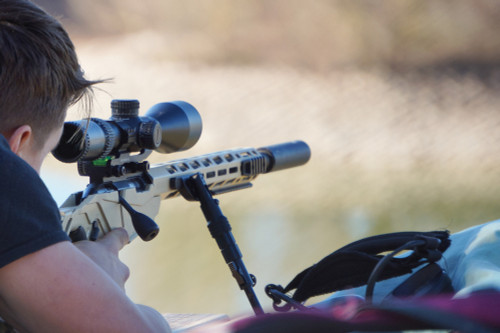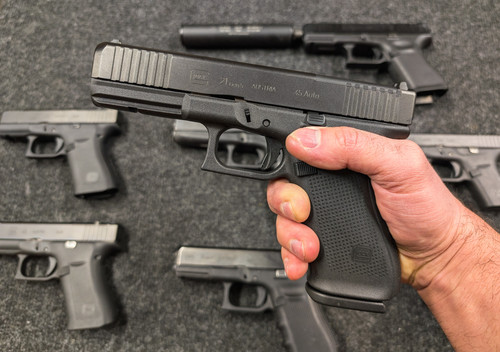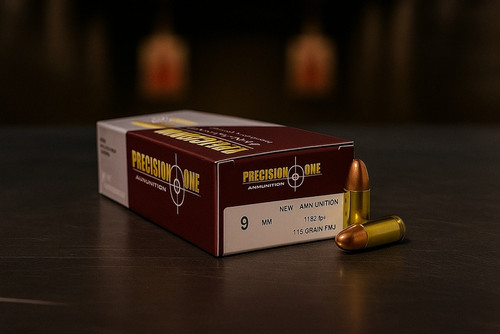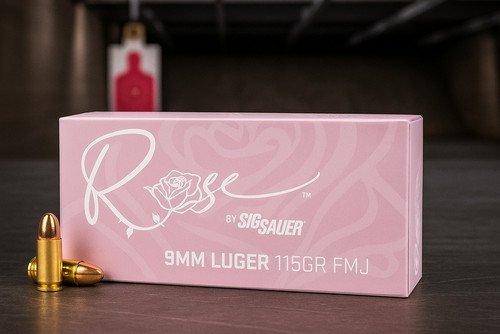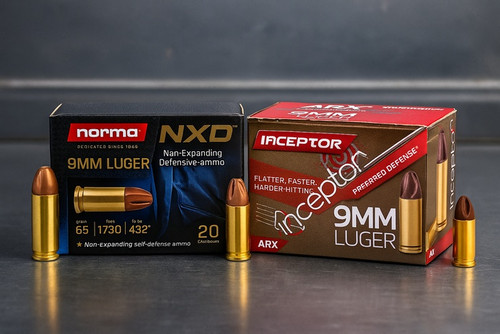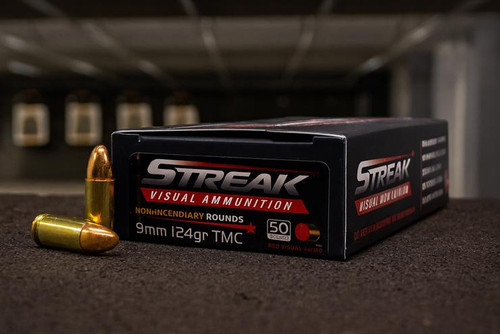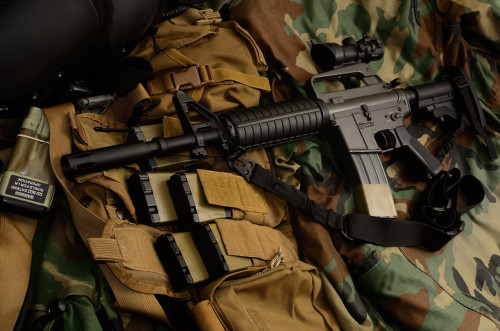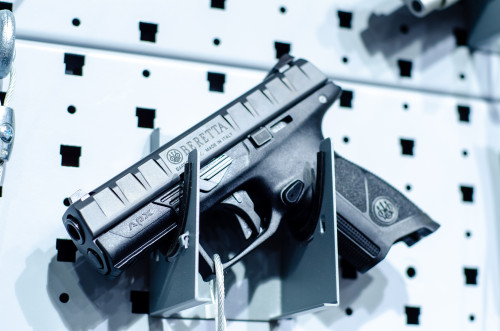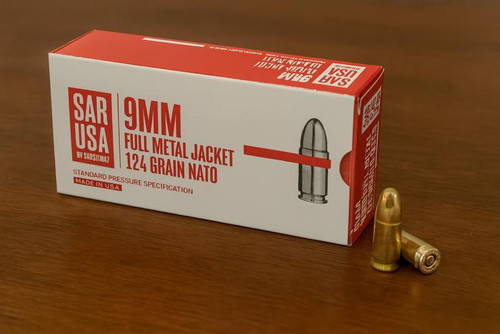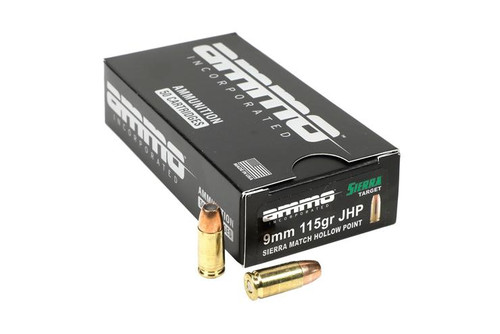Quick Answer
.357 Magnum lever guns give you wide flexibility. Train with cheaper .38 Special, then swap to full-power .357 for hunting or matches. Pick Winchester (1873/1892) for a heritage feel. Choose Marlin 1894 for modern add-ons like optics rails and threaded barrels. Go with Henry Big Boy for classic lines with updated engineering. Or try Taylor’s Alaskan for packable takedown travel. All of these run both .357 Magnum and .38 Special, which suits cowboy action, hunting, and steel targets.
Key Takeaways
- .357 lever guns also chamber .38 Special for cheaper practice.
- Winchesters = heritage handling; Marlin = optic/thread options.
- Henry Side Gate trims weight; Classic maximizes nostalgia.
- Taylor's Alaskan: takedown portability, optic-ready rail.
- Pick sights/rail, barrel length, loading method by use.
Imagine getting two guns for the price of one — that’s what a .357 Magnum lever-action can give you. Run cheap .38 Special for practice days, then switch to hard-hitting .357 Magnum when it matters most for you. You get classic style and real day-to-day use. No wonder they’re back in a way with people who value both heritage and strong performance.
What You're Getting with .357 Lever Guns
Cartridge Basics
The .357 Magnum was developed in the early–mid 1930s and introduced in 1935 by Smith & Wesson with ammunition by Winchester. . It uses the same bullet diameter as the .38 Special: .357 inches. The key change is case length. The .357 Magnum case is 1.29″ long vs 1.155″ for .38 Special—a 0.135″ difference (just over 1/8″). . That extra length blocks high-pressure .357 rounds from being loaded in guns meant only for .38 Special. It’s a simple safety step that protects people at the range.
This design path—well noted by firearms historians—pushed the growth of powerful handgun rounds. Those rounds later found a home in lever-action rifles.
Use Cases
A .357 Magnum lever-action rifle handles many jobs well. For Cowboy Action events, light recoil with .38 Special helps you run fast follow-up shots. Steel silhouette competitors like the flat flight and solid knock-down power.
Hunters value these rifles for varmints and medium game out to about 100–150 yards. With good loads, they have enough energy for deer in thick woods. Noise and muzzle flash are normal factors, and you can manage both with smart load choice and ear protection.
Barrel length matters too.From revolver to 16–18″ carbine, .357 Magnum typically gains ~400–600 fps depending on load.
Economy
One big win with a .357 lever gun is cost control. You can practice with an affordable .38 Special, then move to full-power .357 Magnum when you want more punch. Swapping between these linked cartridges gives you real day-to-day flexibility.
For plinking and drills, .38 Special runs quieter with less kick and less wear. When deer season starts, load .357 Magnum for more speed and power. That dual-caliber path makes the rifle feel like two tools in one.
The Quick List
| Model | Best For | Barrel / Action Notes | Optics / Sights | Notable Features |
|---|---|---|---|---|
| Winchester 1873 | Heritage / Cowboy Action | 24" octagon barrel; classic lever action profile | Gold bead front; semi-buckhorn rear | "Gun That Won the West" feel; traditional styling |
| Winchester 1892 | Lighter Classic Carry | 20" round barrel; smooth, fast lever action | Gold bead front; semi-buckhorn rear | Slick, smooth action — great for carry-style use |
| Taylor's 1892 Alaskan | Takedown / Portability | 16" octagon barrel; takedown design for travel | Skinner-style sights; includes optics rail | Breaks down for travel; compact, stout build |
| Marlin 1894 (CSBL / CST) | Modern Features / Versatile | 16.5" (common modern config); modernized action for reliability | XS Rail / Ghost Ring (CSBL); Threaded barrel option (CST) | Weather-resistant finishes; suppressor-ready (threaded variant) |
| Henry Big Boy Classic | Heirloom / Traditional Look | 20" octagon barrel; traditional lever geometry | Brass bead front; semi-buckhorn rear | Brass receiver, classic styling — great for collectors |
| Henry Big Boy Steel (Side Gate) | Field Use / Utility | Available in 20" or 16.5" barrels; side-loading gate for fast reloads | Traditional open sights | Side loading gate and lighter-weight steel receiver; practical field rifle |
Best .357 Magnum Lever-Action Rifles
Marlin Model 1894 (CSBL / CST)

The Marlin Model 1894 keeps the classic lever feel and adds features many modern users want. The design dates to the late 1800s and brought in a locking bolt, a cleaner trigger, and a shorter receiver. Those roots stay in place today with useful upgrades.
The CSBL stands out for its stainless steel and gray/black laminate build. It’s not only about looks. Stainless fights rust far better than blued steel in wet, rough country. The laminate stock stays stable and shrugs off hard use that might warp standard wood. This setup fits hunters who need a rifle that can live in bad weather.
Both CSBL and CST carry handy 16.5-inch barrels. They shine in brush and tight spaces. The CSBL includes the XS Lever Rail along the receiver and barrel, plus a Ghost Ring sight for fast picks on target. If you want glass, the rail takes scopes or red dots and still lets you use the factory sights.
The CST swaps the CSBL’s full XS Lever Rail for a threaded muzzle but retains XS ghost-ring sights.
Price: $1,088
Features
- XS Lever Rail + Ghost Ring sight system (CSBL)
- CSBL: stainless steel; CST: stainless steel barreled action with a threaded 16.5″ barrel and black painted hardwood stock.
- Rubber recoil pad for comfort
- Side-ejection for easier scope mounting
- 16.5-inch barrel for maneuverability
Pros
- Weather-resistant materials on the CSBL
- Excellent optics mounting options
- Compact length for brush hunting
- Modern features with classic function
- Oversized lever loop works with gloves
Cons
- Heavier than some traditional models
- Premium pricing compared to basic lever guns
- Limited ammunition capacity (tube magazine)
- CSBL's laminate may not appeal to traditionalists
- Finding accessories can be challenging during production gaps
Henry Big Boy Steel Side Gate

Henry revolutionized the lever-action market with their attention to quality and smooth actions. The Big Boy Steel Side Gate model tackles one of the few criticisms leveled at earlier Henry rifles - the loading method. This model offers the best of both worlds with both a traditional side loading gate and Henry's signature removable tube system.
At around 7 pounds, the Steel Side Gate trimmed significant weight compared to the brass-receiver Classic model. This weight reduction makes it much more comfortable for all-day carry in the field. The steel receiver still maintains a classic appeal but with practical benefits for hunters who need to cover ground.
The side loading gate transforms how you use this rifle in hunting situations. It allows you to quickly top off the magazine without removing the tube, perfect for keeping the gun loaded during extended sessions. But you retain the tube-loading option when you want to completely unload or load the rifle more quickly at the range. This dual-loading system gives you flexibility that other lever guns can't match.
Henry offers this model with a 20-inch barrel or a handier 16.5-inch carbine. You get to choose raw speed or quicker handling. The walnut stock and forend give a classic look, and a rubber pad adds comfort. Sling swivel studs come from the factory, so it’s ready for the field right away, unlike many rivals that need extra parts before you can carry it right.
Price: $1,088
Features
- Dual loading system: side gate and removable tube
- Available in 20" or 16.5" barrel configurations
- Drilled and tapped for scope mounting
- Walnut furniture with rubber recoil pad
- Traditional open sights
- Factory sling swivel studs
- Steel receiver reduces weight
Pros
- Significantly lighter than brass-receiver models
- Dual loading methods for different situations
- Quick top-off capability with side gate
- Ready for field use with sling studs installed
- Smooth, reliable action Henry is known for
Cons
- Less "showpiece" appeal than brass models
- Traditional sights may not satisfy tactical users
- Lacks rail system for modern optics (needs separate base)
- Premium price compared to some competitors
- Wood may still require care in wet conditions
Taylor's & Co. 1892 Alaskan Takedown (Chiappa)
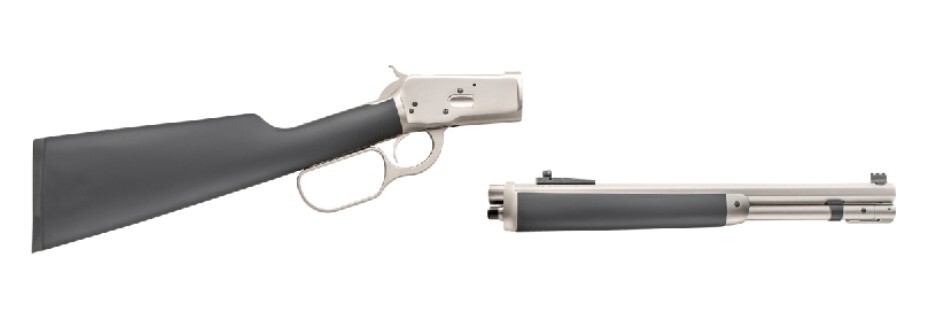
The Taylor’s & Company 1892 Alaskan Takedown brings fresh solutions to the proven 1892 pattern. Chiappa builds it for Taylor’s. The goal is clear: a packable rifle that breaks down fast. The takedown design lets you split it into two short sections. That’s handy for backcountry trips, small aircraft, or tight storage at home.
This rifle adds modern touches you can feel. The furniture uses black over-molded rubber on wood for good grip in rain and better comfort in the cold. The stock has an anti-shock rubber buttpad that helps tame the already manageable .357 Magnum kick.
The 16-inch octagonal barrel balances carry and performance. The barrel is drilled and tapped for optics and ships with a Skinner Express-style sight set. The key detail: both sights and the rail mount to the barrel section. So when you put the rifle back together, your zero stays true. That saves time in the field.
A D-shaped oversized lever loop gives more finger room, which helps big hands or gloved hands run the action. Finishes include matte black or matte chrome. The focus is on use in rough places, not on shine.
Price: $1,697
Features
- True takedown design for compact transport
- 16" octagon barrel for balance of performance and portability
- Skinner-style sight system from factory
- Optics mounting that maintains zero after reassembly
- Over-molded rubber furniture for grip in all conditions
- D-shaped oversized lever loop for gloved operation
- Choice of matte black or matte chrome finish
- Capacity: 7 rounds (.357 Mag)
Pros
- Extremely portable when broken down
- Maintains zero when reassembled
- Superior grip in wet or cold conditions
- Oversized lever works well with gloves
- Ready for optics from the factory
Cons
- Limited 7-round capacity
- Higher price point due to takedown mechanism
- Modern appearance may not appeal to traditionalists
- Slightly heavier than non-takedown equivalents
- More complex disassembly than fixed rifles
Winchester Model 1873 (Sporter & Variants)

The Winchester Model 1873 earned the line “The Gun That Won the West” through wide use in that era. Today’s reproductions in .357 Magnum blend that history with strong modern materials and a practical chambering. The classic toggle-link action marks a turning point in design, bringing a repeat-fire system that changed how people ran rifles in the late 1800s.
The lever system in 1873 shows how clever that change was. You run the lever forward. Inside, linkages move the bolt, feed a round, and then pull the empty case out after the shot. That setup gave much faster follow-up shots than the single-shot rifles common at the time.
Winchester offers several variants of the Model 1873, but the Sporter stands out with its 24-inch octagon barrel. It provides excellent sight radius and velocity. Available with either straight grip or pistol grip stocks, the Sporter caters to different shooting preferences. The color case-hardened receiver option delivers a striking visual appeal that replicates the look of 19th-century firearms, with swirling patterns of blue, brown, and straw colors.
The Sporter variant features a 14-round capacity, substantially more than most competitors. It comes equipped with a Marble Arms gold bead front sight and semi-buckhorn rear sight for traditional-style aiming. The walnut stock with satin oil finish provides both beauty and function. For those interested in competition or precision shooting, the receiver comes drilled and tapped for mounting a tang sight - a period-correct precision sighting option.
Price: $1,226 - $1,499
Features
- 24-inch octagon barrel for maximum velocity
- Color case hardened or blued finish options
- Marble Arms gold bead front sight
- Semi-buckhorn rear sight
- Drilled/tapped for tang-mounted rear sight
- Walnut stock with satin oil finish
- Factory spec lists 14-round capacity in .357 Mag/.38 Spl with the 24″ octagon barrel.
- Steel loading gate
Pros
- Historic design with modern manufacturing
- Superior ammunition capacity
- Excellent sight radius for precision
- Authentic period aesthetics
- Smooth, proven action
Cons
- Heavier than carbine models
- Longer barrel can be cumbersome in tight spaces
- Higher price point than imported replicas
- Traditional sights require practice for modern shooters
- Limited options for mounting modern optics
Winchester Model 1892 (Carbine / Short)

The Winchester Model 1892 grew from the Model 1873. It brought a smoother, stronger action in a compact frame. John Browning designed it, and that name still carries weight. The 1892 showed up late in the frontier years, yet it still became a Western icon. Films made it famous, and exhibition stars like Annie Oakley kept that fame alive.
The Model 1892’s action steps ahead of the 1873 in a clear way. It cycles faster and feels slick from the first stroke. The layout echoes the larger Model 1886, scaled down just right for pistol calibers like .357 Magnum. That fit gives a smooth shooting feel with fine balance and easy handling. You get a rifle that runs fast and stays steady in the hands.
Winchester sells the 1892 in a few trims, and the Carbine and Short see the most love. Both bring a handy 20-inch round barrel that blends speed, carry, and useful velocity. The Carbine holds the forend with a classic barrel band for that cowboy look. The Short swaps in a forend cap and a different buttplate, so it gives off a more refined vibe without losing the old style.
Both rifles ship with walnut stocks and matching forends that set off the blued steel. The sights are traditional: a gold bead front and a semi-buckhorn rear. They give a clean picture for hunting or casual range time. With a 10-round capacity, you have enough on board for most jobs without extra bulk. The lighter build and shorter length help hunters who value quick handling over top velocity from the muzzle.
Price: 1,279.99
Features
- 20-inch round barrel for balance of velocity and handling
- Traditional walnut straight-grip stock
- Carbine: barrel band and carbine strap buttplate
- Short: forend cap and crescent buttplate
- Gold bead front sight
- Semi-buckhorn rear sight
- 10-round magazine capacity
- Classic blued finish
Pros
- Lighter and more maneuverable than 24" models
- Exceptionally smooth cycling action
- Historic design with modern manufacturing
- Good balance of capacity and weight
- Authentic Western aesthetic
Cons
- Limited options for mounting modern optics
- Traditional sights have learning curve for new shooters
- Premium pricing compared to imported replicas
- Shorter barrel sacrifices some velocity
- May require aftermarket additions for hunting use
Henry Big Boy Classic

The Henry Big Boy Classic shows careful American build quality and old-school lines. Unlike Winchester and Marlin models with roots in the 1800s, the Big Boy is a modern design that salutes classic lever guns. You get a traditional look with tight, current-day machining, and that blend works well.
The first thing you'll notice about the Big Boy Classic is its striking brass receiver, which develops a beautiful patina with age and handling. The 20-inch octagon barrel adds to the nostalgic appeal - octagon barrels were originally used in the black powder era to prevent barrels from rolling during manufacturing, but today they serve as a nod to that heritage. The American walnut furniture features a straight grip stock and a brass buttplate that matches the receiver.
Henry's attention to detail shows in the fit and finish of these rifles. The walnut stock and forend are beautifully grained and precisely fitted to the metal. The brass bead front sight and adjustable semi-buckhorn rear sight provide a traditional sighting solution, though the receiver is also drilled and tapped for mounting a scope if desired. The brass barrel band on the forend completes the classic look.
The Big Boy Classic stands out in the way it runs. Henry’s name is tied to smooth actions, and this model keeps that mark. The lever moves with little effort and a clean glide. One clear difference is the front-loading tube magazine—newer runs also add side gates. The tube lets you unload safely, though you remove the inner tube to load. At 8.68 pounds it is not light, but that weight helps calm the mild push of the .357 Magnum.
Price: 1,158–$1,176
Features
- Polished brass receiver, buttplate, and barrel band
- 20-inch octagon barrel
- American walnut straight-grip stock
- Brass bead front sight
- Adjustable semi-buckhorn rear sight
- Drilled and tapped for scope mounting
- Tube-loading magazine system
- Highly polished blued steel barrel
Pros
- Exceptional fit and finish
- Beautiful brass receiver develops character with age
- Extremely smooth action
- Excellent accuracy reputation
- Heirloom quality construction
Cons
- Heavy at 8.68 pounds
- Tube loading system slower to reload than side gate
- Brass requires occasional maintenance
- Higher price point than steel models
- Weight can be tiring during all-day hunting
Buyer's Guide: How to Choose Your .357 Lever

Loading & Maintenance
The way your lever gun loads can make a big difference in how you use it. Traditional side-gate loaders (Winchester, Marlin) let you top off the magazine without emptying it - great for hunting when you might need to replace a round or two. Tube-loaders (traditional Henry) require removing the tube to load but can be faster to completely unload. Some new models like the Henry Side Gate offer both options.
For cleaning access, side gates can be slightly more challenging as you're working through a smaller opening. Tube systems allow full access to the magazine for cleaning. Factor in how and where you'll use the rifle - quick top-offs in the field favor side gates, complete loading/unloading at the range might favor tubes.
Barrel & Balance
Barrel length shapes both handling and speed. Short 16–16.5-inch barrels on rifles like the Marlin 1894 CST or Taylor’s Alaskan help in tight spots. They are lighter, point faster, and carry well all day. You give up about 150–200 fps compared to a 20-inch tube, so keep that in mind.
Mid-length 20-inch barrels, as on the Winchester 1892 and Henry Big Boy Steel, split the difference. You get solid velocity and easy handling. A classic 24-inch barrel, like on the Winchester 1873 Sporter, stretches sight radius and bumps speed, but it adds weight and length. Think about your main use—brush hunting rewards short barrels, and open ground or slow range work can favor longer ones.
Optics & Sights
Traditional buckhorn and bead sights work well but have limitations in low light or for aging eyes. Ghost Ring sights on models like the Marlin CSBL provide faster target acquisition. For mounting optics, the XS Lever Rail (Marlin CSBL) offers the most versatile mounting solution.
Scout-style forward mounted rails (Taylor's Alaskan) let you mount a scope while maintaining the balance of the rifle. Tang-sight options (Winchester 1873) provide period-correct precision. Some models require separate bases for mounting scopes. Match your sighting system to your use case - hunting in low light benefits from optics, competition might favor specialized sights.
Material & Finish
Your environment should dictate your choice of materials. Stainless steel and laminate stocks (Marlin CSBL) offer superior weather resistance for wet or humid climates. Traditional blued steel and walnut (Winchester models) provide classic looks but need more care.
Brass receivers (Henry Classic) develop beautiful patina but require occasional maintenance to prevent tarnish. Synthetic or rubberized coatings (Taylor's Alaskan) provide improved grip in adverse conditions. Match the materials to your conditions - hard use in rough weather favors stainless/synthetic, display pieces might favor brass and walnut.
Weight & Capacity
Heavier rifles—like the Henry Big Boy Classic at 8.68 lbs—soak up recoil better. The trade is fatigue if you hike far with the gun. Lighter choices—like the Henry Steel Side Gate at about 7 lbs—carry easier yet can feel a bit snappier at the shot. Capacity runs from 7 rounds (Taylor’s Alaskan) to 14 rounds (Winchester 1873). That changes both total weight and how often you reload.
For hunting, a moderate capacity and a lighter build often hit the sweet spot. For competition or home defense, more rounds may lead the list. Weigh the give-and-take by how far you will carry the rifle and how many shots you usually fire.
Accessories
Consider what accessories you might need. Threaded muzzles (Marlin CST) allow for suppressors or muzzle devices. Factory sling swivels (Henry Steel Side Gate) save an aftermarket addition. Oversized lever loops (Marlin, Taylor's) accommodate gloves for cold-weather use.
Recoil pads come standard on some models (Henry Steel Side Gate, Marlin) but might need to be added to others. Think about your complete system - a hunting rifle needs different accessories than a ranch or home-defense gun.
Field Notes: Loads, Zeroing, and Roles

Training
These rifles shine at the range because you can train with .38 Special. Those lighter loads cost less, recoil less, and wear the barrel less. They are great for building form and muscle memory. Your zero will shift a bit when you move back to full-power .357 Magnum. Confirm your zero with the exact load you plan to carry in the field.
New shooters do well starting with .38 Special. The mild push builds calm and skill before you step up to magnum loads. This two-cartridge setup makes the rifle feel like two guns in one, so it grows with your comfort level.
Hunting
From a rifle-length barrel, .357 Magnum can take deer-size game at modest ranges—about 100 to 125 yards. Heavier bullets, 158 to 180 grain, tend to dig deeper and pass more energy. Soft points or hollow points built to expand improve results on game.
Your ethical range depends on your skill, your load, and the animal. For deer-size targets, keep shots inside 100 yards as a safe rule. Smaller game like coyotes can stretch a bit farther. Always place the shot first—do not chase distance for its own sake.
Competition
For Cowboy Action Shooting, .38 Special brings enough power to move steel with a very light kick. Smooth actions let you run the lever fast between shots. The classic sights serve well at the short lanes used in these matches.
Silhouette games may call for full-power .357 Magnum for a flatter path. The extra weight of a Henry Big Boy Classic steadies the rifle for careful holds. Many shooters favor Ghost Ring or other aperture sights here for a clearer, faster view than a buckhorn.
Conclusion
The right .357 Magnum lever-action depends on how you plan to use it. If you want deep Western roots, the Winchester 1873 brings the “Gun That Won the West” feel. If you want a lighter classic, the Winchester 1892 adds nimble handling and keeps the history alive.
Many modern buyers will enjoy the Marlin 1894 CSBL/CST for optic mounts and weather-ready parts. The Henry Big Boy Classic gives you a showpiece with heirloom charm. The Henry Big Boy Steel Side Gate leans more to field use with lower weight and easy loading.
If you need max carry ease, Taylor’s 1892 Alaskan Takedown breaks down to ride in a pack or small case. Every one of these rifles shoots both .38 Special and .357 Magnum, so you get broad use from range time to real hunts. That mix of Old West charm and real on-range performance still earns these rifles a place in many safes across America.
Further reading: for a comprehensive look at current lever-action offerings and practical buying advice, read our best lever-action rifles — from classic to cutting-edge roundup.

Federal Fusion 357 Mag 158gr
$27.29
at Pro Armory
Prices accurate at time of writing
Frequently Asked Questions (FAQs)
Can a .357 Magnum lever-action safely fire .38 Special?
Yes, absolutely. All .357 Magnum firearms can safely use .38 Special. The .38 Special has the same bullet diameter, a shorter case, and lower pressure, so it fits and runs in .357 Magnum chambers.
What effective range can I expect from a .357 lever rifle?
With the right loads and solid form, a .357 Magnum lever rifle works to about 100–150 yards on medium game. For paper or steel you can go farther. Keep .38 Special inside 100 yards since it drops fast at range.
Side loading gate vs. tube—what's faster in the field?
A side gate lets you top off the magazine without unloading, so it is faster when you add a round or two during a hunt. Tube systems need you to pull the inner tube, but they can be quicker to load from empty or to clear all rounds.
Do I need a threaded barrel for a suppressor on a lever gun?
Yes. Some models, like the Marlin 1894 CST, ship with factory threads. Other rifles need a gunsmith to cut threads for a suppressor or a muzzle device.
Is a takedown .357 worth it for travel and storage?
If you fly in small planes, hike into remote spots, or have tight storage, a takedown like Taylor’s 1892 Alaskan helps a lot. For most users, the extra cost and added parts may not be needed.
Which sights are better: buckhorn, Ghost Ring, tang, or a red dot?
Ghost Ring sights give fast aim but a bit less fine detail than a tang sight. Buckhorn is classic yet has a steeper learning curve. Red dots are fastest to read but need power and a mount. Pick based on your main use.
About the Author
This article was written by the Pro Armory writing team. Our work draws on current research, including the Journal of Military Science, Firearms News, and the National Shooting Sports Foundation. We also use trusted guidance from official defense sources and leading firearm groups such as the ATF, NRA, and factory manuals.
Disclaimer: This guide is for education only. Always follow local, state, and federal firearm laws. Makers can change features and specs over time. Check current details before you buy or make any changes.



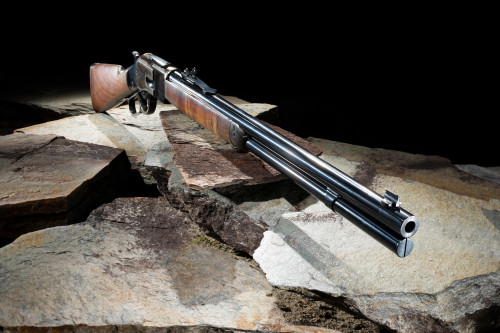
 Pro Armory Editorial Team
Pro Armory Editorial Team